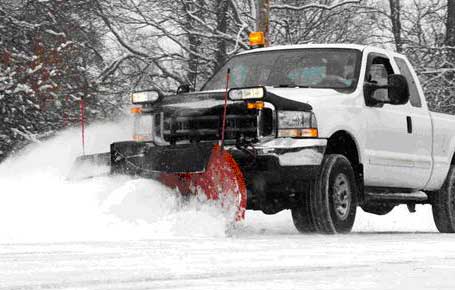Yes No Share to Facebook
Excluded Equipment Operations Involves Liability Coverage Concerns Arising From the OPCF#30 Endorsement
Summary: Navigating the complexities of liability risks for machinery attached to automobiles is crucial for businesses, making it essential for insurance brokers to provide comprehensive coverage solutions to avoid uninsured gaps; partnering with Benchmark Legal Offices can offer landlords valuable assistance in understanding and addressing these legal challenges effectively. NOTE: Above information is A.I. (Artificial Intelligence) generated based on following content.
Does An Insurance Broker Have a Duty to Advise About the Liability Risk of Attached Machinery?
An Insurance Broker Owes a Stringent Duty of Care to Ensure That Proper Advice and Information Is Provided to Clients Including a Duty to Advise Business Owners of Risks and Solutions Regarding the Concerns For Machinery Attached to An...
Understanding Liability Risk Issues Involving Equipment Attached to Automobiles With the OPCF#30 Endorsement

The owner of a business is continually challenged with the ongoing review and changes that affect the insurance requirements of the business; accordingly, a business owner will heavily rely upon professional insurance experts for information, advice, and guidance, so to enable the making of informed decisions. With insurance concerns, especially for commercial liability risks where it may take years for a professional insurance advisor to deeply learn the various nuances and intricacies, a business owner will generally only understand an overview of all that is involved. Accordingly, the business owner will depend on a trusted professional advisor for quality information that enables the business owner to decide what insurance coverage is necessary and appropriate.
Coverage Concerns
Many businesses make use of automobiles within daily operations. This is especially so for contracting businesses wherein automobiles are routinely used to transport employees, equipment, and materials, to various project locations. In many cases, equipment that performs specific functions is physically mounted upon or attached to an automobile such as, among many other examples, a hoist use when loading and unloading for flatbed delivery services, a bucket lift on an arborist truck, or a tank and pump on a septic truck.
Whereas insurers of automobiles, generally, underwrite and provide automobile insurance policies with the intent that such automobile policies provide insurance protection for risks related to the use or operation of the automobile rather than the use or operation of attached equipment, insurers will commonly attach an Ontario Policy Change Form #30 (OPCF 30) - Removing Coverage For Attached Machinery Endorsement as the approved official document that amends the standard automobile policy, being the Ontario Automobile Policy (OAP 1) so to remove certain coverage that would otherwise apply via the automobile policy. As indicated, this is a common practice by insurers of commercial automobiles and, when the risk involved is properly addressed by other insurance methods, there is little, if any, downside to the business that owns and operates the commercial vehicle to which the OPCF 30 is applied. The law granting the right to an insurance company to attach such a coverage limiting and excluding endorsement to an automobile insurance policy is provided within section 248 of the Insurance Act, R.S.O. 1990, c. I.8 which, along with the relevant wording of the OPCF 30 as removing certain coverage from the automobile policy state:
248 Subject to the limitations and exclusions of the endorsement, the insurer may provide by endorsement to a contract evidenced by a motor vehicle liability policy that it shall not be liable for loss or damage resulting from the ownership, use or operation of any machinery or apparatus, including its equipment, mounted on or attached to the automobile while such automobile is at the site of the use or operation of that machinery or apparatus.
1. Purpose of This Change - This change is part of your policy. It removes coverage for loss or damage resulting from the ownership, use or operation of attached machinery or apparatus.
2. Limitations on Your Coverage - In return for the premium charged, we will not provide coverage for loss or damage under Section 3, "Liability Coverage," or Section 4, "Accident Benefits Coverage," of your policy for loss or damage resulting from the ownership, use or operation of the following machinery or apparatus, including its equipment, mounted on or attached to the automobile, while at the site of the use or operation of the machinery or apparatus.
Where a potential problem arises is when an insurance broker fails to provide an alternative liability coverage solution so as to fill the gap created as an uninsured risk exposure when the OPCF 30 is applied to the automobile insurance. The gap arises whereas most, perhaps all, standard wordings of commercial general liability policies commonly contain an exclusion for the operation of automobiles, including the parts of and equipment attached to automobiles. Generally, a commercial general liability policy, such as this example as taken from the Form LR10 from Intact Insurance, will contain an exclusion regarding automobiles and any attached equipment which will read as:
This insurance does not apply to:
1. “bodily injury” or “property damage” arising out of the ownership, use or operation by or on behalf of the Insured of any “automobile”, but this exclusion will not be construed to apply to liability imposed by law upon the Insured for loss or damage arising from the ownership, use or operation of machinery or apparatus (including its equipment), mounted on or attached to any automobile at the site of the use or operation of such machinery or apparatus and provided the Insured is not insured for liability arising from the ownership, use or operation of such mounted or attached machinery or apparatus under any automobile policy.
As above, per the OPCF 30 endorsement which excludes the use and operation of machinery attached to an automobile as well as the standard exclusion within a commercial general liability policy that excludes the use and operation of machinery attached to an automobile, if some solution remains without attention, an uninsured loss could arise. Generally, the common solution is for the commercial general liability insurer to remove or amend the exclusion within the commercial general liability policy; however, some insurers are resistant to doing so, especially when the insurer is providing only the commercial general liability policy and another insurer is providing the automobile coverage. Another challenge arises whereas an insurer is forbidden from engaging in tied-selling as an "unfair or deceptive act or practice" contrary to section; accordingly, the insurer in unable to, formally, state that the exclusion will only be addressed through an amendment or other means if the insured client arranges both the commercial general liability and automobile coverage with the same insurer. Specifically, O. Reg. 7/00 as a regulation to the Insurance Act includes as an "unfair or deceptive act or practice":
1. 10. Making the issuance or variation of a policy of automobile insurance conditional on the insured having or purchasing another insurance policy.
Accordingly, and despite the logic and sense that it would make for the same insurer to provide both the commercial general liability as well as the automobile coverage as a means to resolve the coverage gap problem, the insurer, and the broker as agent of the insurer, is unable to mandate such a requirement when arranging the automobile insurance policy; however, such is permissible when arranging the commercial general liability insurance whereas the "unfair or deceptive act or practice" only restricts tied selling of another insurance product to the automobile insurance.
Broker Errors
When an insurance professional fails to attend to a coverage gap concern, especially a coverage gap concern that would be apparent and plainly obvious to a qualified insurance professional, such as the coverage gap concern that occurs where both the commercial general liability and the automobile coverage exclude use and operation of machinery attached to an automobile, the professional may be liable for a negligent error or omission in breach of the "stringent duty" to provide information and advice as was described by the Supreme Court in the case of Fletcher v. Manitoba Public Insurance Co., 1990 CanLII 59 (SCC), [1990] 3 S.C.R. 191 wherein it was said:
In my view, it is entirely appropriate to hold private insurance agents and brokers to a stringent duty to provide both information and advice to their customers. They are, after all, licensed professionals who specialize in helping clients with risk assessment and in tailoring insurance policies to fit the particular needs of their customers. Their service is highly personalized, concentrating on the specific circumstances of each client. Subtle differences in the forms of coverage available are frequently difficult for the average person to understand. Agents and brokers are trained to understand these differences and to provide individualized insurance advice. It is both reasonable and appropriate to impose upon them a duty not only to convey information but also to provide counsel and advice.
As the OPCF 30 exclusion endorsement is an alteration to the standard Ontario Automobile Policy (OAP 1) and which involves an additional document being attached to the insurance paperwork, it would be difficult for an insurance professional to argue a lack of knowledge of the coverage gap problem. Additionally, as a professional insurance advisor, it is the job of the professional to be aware and bring the problem, with a solution, to the attention of a business owner with machinery attached to automobiles.
Summary Comment
When an insurance broker is reviewing the insurances for a business that requires both automobile coverage and commercial general liability, such as a contractor with a fleet of work vehicles, some of which may have attached machinery, the insurance broker should pay particular attention to the coverage gap problem that arises when the automobile coverage is arranged with the OPCF 30 endorsement applied. In such circumstances, the insurance broker may commit professional negligence as an error or omission for failure to arrange coverage for the risk exposure involving liability arising from the use or operation of the attached machinery.


